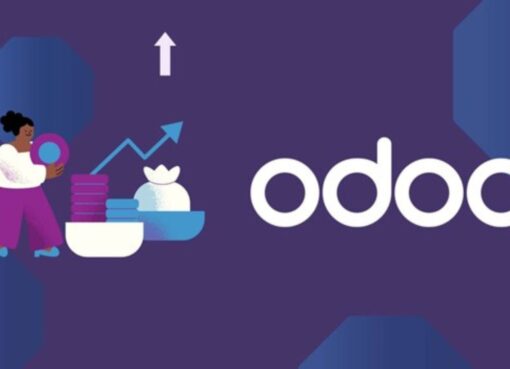How To Make A Sales Deck That Stands Out In 2024?

Creating a sales deck that grabs attention and seals the deal can feel like a tall order. Every business wants to stand out, but not everyone knows how. This common challenge is exactly what we’re addressing today.
Did you know? A well-crafted sales deck highlights your product’s strengths and brings your company values into the spotlight.
In this article, we’ll reveal key strategies for crafting a sales deck in 2024 that truly stands out—from understanding your audience to using AI tools for sharper insights. We promise practical tips and straightforward advice that will transform your approach.
The Importance of a Strong Sales Deck
A good sales deck does more than just share facts. It tells a story that connects with people, making them excited about what you offer.
Highlights the Product or Service
Show off your product or service with amazing graphics and stories that grab attention. Use clear pictures to show what you sell or do. Tell stories about how your product solves problems.
This makes it easy for people to see why they need what you offer.
Include real success stories and case studies in your sales pitch. This proves your product works well for others, so new customers feel more confident choosing you. Talk about common worries buyers might have and how your product beats those challenges.
End with a strong call to action, inviting them to buy or learn more right away.
Showcases the Company’s Values and Strengths
A strong sales deck brings out the best in your company. It tells everyone about your team’s unique skills and past wins. This part talks about each person on your team, showing off their strengths and how they’ve helped before.
It gives a clear picture of what makes your business stand out from others.
Then, it covers the details like revenue streams and financial forecasts. By using cool graphs and infographics, it makes complex data easy to understand at a glance. This shows you know not just where you are now but also where you’re heading—and that’s something investors or clients really want to see.
It proves you’re solving customer problems in ways no one else can, thanks to your deep understanding of market challenges.
Influences Potential Investors or Clients
Sales deck does more than just showcase a product or service; it plays a key role in winning over investors and clients. By highlighting the unique value of a business, it clearly presents what sets the company apart in the market.
The team’s dynamics and track records are also crucial. Investors want to see who they’re putting their money behind. Financial projections link the company’s vision to tangible outcomes, making it easier for potential backers to see growth possibilities.

Ending with a compelling call to action prompts immediate feedback or engagement, moving conversations forward effectively.
Tips for Creating a Standout Sales Deck in 2024
To make your sales deck pop in 2024, know who you’re talking to and what they need. Use stories and strong pictures to connect and convince them.
Understand your Audience
Before creating your sales deck, do some homework on who will be watching it. This means looking into what potential clients like and dislike. You can find out a lot by talking directly to customers, listening to their online talks, and seeing what they do on your website thanks to tools like Google Analytics.
LinkedIn gives you clues about the professional side of things.
Knowing if your audience prefers facts over stories or vice versa can shape how you put together your presentation. For example, market research and industry reports might show that certain buzzwords light up their interest – use them! Also, digging into competitor strategies helps avoid offering the same old thing.
Use Storytelling to Your Advantage
After getting to know your audience, it’s time to engage them with storytelling. Stories can show how your product solves a real problem. Start with an issue that the prospect faces.
Then, share how your service offers a unique solution. This method helps create an emotional link and keeps people interested.
Telling stories about real success cases adds power to your words. For instance, if someone used what you’re selling and saw great changes, talk about it! Make sure the story is easy for others to see themselves in it too.
Incorporate Social Proof and Visuals
Add client testimonials, case studies, and endorsements from industry experts to your sales deck. These show real people who have seen great results with what you’re selling. It makes others more likely to say yes.
People trust other people’s words and successes. By showing this proof, you’re not just saying you’re good; you’re proving it with evidence.
Use powerful visuals like infographics, charts, and pictures too. Good graphics make your message stick in people’s minds longer than words do on their own. Bring in those high-quality images that grab attention and keep it.
Real-life examples and success stories can be shown through these visuals, making your point even clearer. This way, your sales deck doesn’t just tell; it shows why what you’re offering is worth buying.
Customize for Each Customer
Making your sales deck stand out means making it as unique as the person looking at it. Start by learning what each customer likes, needs, and wants. Then, use that info to shape your pitch.
This isn’t just about changing names or titles but about tweaking visuals and content to hit home with them. Say one client loves facts and figures while another prefers stories of success; you switch gears accordingly.
Your goal? Create a feeling that this pitch is made for them—and only them.
Focus on word-of-mouth too. Happy customers talk, so make their experience with your customized approach something they’ll want to share. Use feedback to make your next pitches even better, showing future clients you listen and adapt.
Personalize everything from emails to presentation slides so every interaction feels personal, proving you’re not just selling — you’re solving real problems in ways that speak directly to them.
Use AI Tools for Data Analysis
AI tools for data analysis are game changers. They track how long someone looks at each slide and how engaged they are. This info helps you know what works and what doesn’t. Using AI, you can make your sales deck better by focusing on slides that people like the most.

These tools also use open-source technology. That means you get to customize more while still using AI’s power. They pick out cool design layouts and add your company’s style to them automatically.
Create Personalized and Dynamic Presentations
Making your sales deck stand out means it has to speak directly to each customer. Use customizable templates that hit hard and deliver impact every time. With tools like PopAi pro, crafting personalized presentations becomes a breeze.
This AI can analyze data and churn out content that not only looks stunning but feels unique to the viewer’s needs. Interactive elements keep viewers hooked, making each slide more than just pretty visuals—they become persuasive stories waiting to be told.
To ensure your decks don’t just blend in, measure their success with analytics. See which parts engage your audience the most and refine for even better results next round. Engaging prospects becomes easier when you know what works.
For an easy start on creating presentations powered by AI, check out PopAi and deepen your experience in creating dynamic decks with their ai ppt maker.
Automate Follow-up Processes
Automate follow-up processes to keep in touch with potential clients or investors. Use AI to make this easier and more efficient. This way, you can send updates based on customer feedback and any changes inside your company.
It helps maintain interest from the people you’re talking to.
This approach also improves how customers see your business. By sending personalized messages after meetings or presentations, you show that you care about their experience.
Conclusion
Making a standout sales deck in 2024 is all about knowing your audience, telling great stories, and using visuals that pop. Keep it simple, but make every slide count with data and stories that speak to them. Following up after your presentation keeps the conversation going. So go ahead, mix these ideas into your next pitch; you might just see amazing results!



